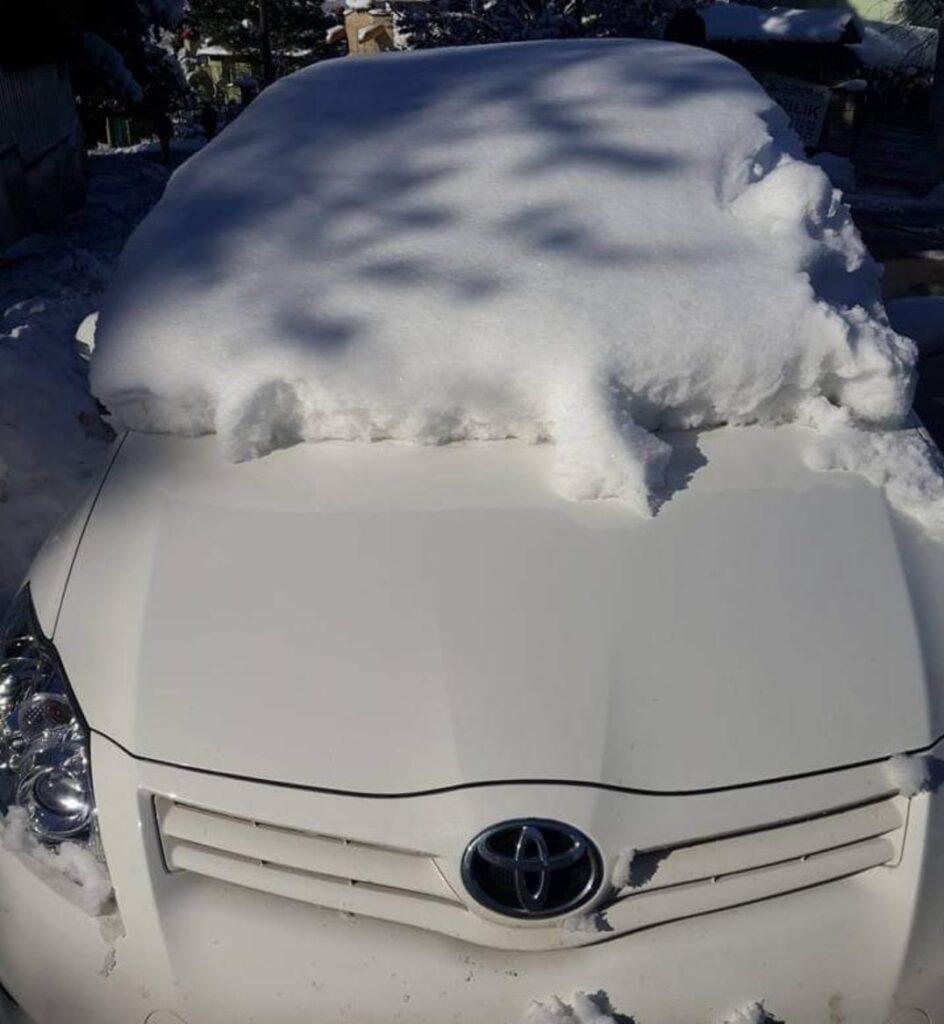
Hello Dear Friends,
Winter is here! You may be a new driver or unfamiliar with these weather conditions. I’ve prepared a practical guide with tips for driving in winter.
Let’s take a look at what we need to do!
1. CLEAR SNOW OFF YOUR CAR!
If your car is parked outside:
• Clear the snow off your windows and mirrors thoroughly. Don’t skip this step—it will improve your visibility and make driving safer.
• Note: Don’t forget to remove the snow from the roof as well. While driving, this snow could fall onto your windshield and startle you.
2. CHECK YOUR WINDSHIELD WASHER FLUID!
Windshield washer fluid is essential in winter. Mud and slush from other vehicles can dirty your front and rear windows, reducing visibility. Avoid using plain water and opt for washer fluid that can withstand temperatures down to -45°C.
3. INSPECT YOUR WIPERS!
Ice can form on your wipers, rendering them useless. Before driving, ensure the wipers are free of ice. You can gently tap them against the windshield to remove the ice. Additionally, when parking, lift the wipers away from the windshield to prevent freezing.
4. USE YOUR VENTILATION SYSTEM!
Foggy windows are common in cold and rainy weather. Set your car’s fan to the “Defrost and Feet” mode to clear the fog effectively.
5. AVOID SUDDEN ACCELERATION AND BRAKING!
On snowy surfaces, sudden acceleration or braking can cause your car to skid. Instead, apply gentle pressure to the gas and brake pedals.
6. AVOID SHARP STEERING MOVEMENTS!
Sudden steering movements can cause weight shifts that lead to skidding, either at the front or rear of your car. Minimize lane changes, and when changing lanes, use small and gradual steering inputs.
7. INCREASE FOLLOWING DISTANCE!
In snowy weather, stopping distances are longer. Double the distance between your car and the one ahead of you. This extra space will provide added safety and peace of mind.
8. BE CAREFUL IN CURVES!
Hidden ice is often found on curves and bridges. Reduce your speed as much as possible before entering curves. Avoid braking in curves as it can cause skidding and loss of traction. Enter curves at low speed and avoid braking while turning.
9. WATCH OUT FOR WATER PUDDLES!
Avoid water or snow puddles on the sides of the road, as they can cause your car to veer sideways. Using the middle lane is usually safer.
10. IF YOUR CAR SKIDS
• If the rear of your car slides in a curve, turn the steering wheel in the direction the rear is sliding.
• If the front of your car slides, ease off the gas and gently steer to regain control.
11. KEEP A BLANKET HANDY!
If you’re traveling out of town, carry a blanket, flashlight, first aid kit, some snacks, and other essentials in your car for emergencies.
12. NOTES FOR ROAD TESTS
Poor weather conditions can lead to sudden cancellations of road tests. For example, Hamilton Drive Test Center might announce that all road tests are canceled until 11 AM due to weather, only to extend this until 2 PM or lift the cancellation if conditions improve. If your test is canceled due to weather, you’ll need to reschedule it for free.
Ensure your car has all-season or winter tires, as these are sufficient for the test. Keep a tool for clearing snow off your car while waiting inside.
Final Thoughts
Living in Canada means knowing how to drive in these weather conditions. I’ve shared some practical tips without going into too much detail. Feel free to share your own tips and tricks in the comments below!
Wishing you safe and open roads!
Orhan Hoca
Attentive Driving Instructor
647 984 4682
#driverlicense #accident #winter #driving #roadtest
